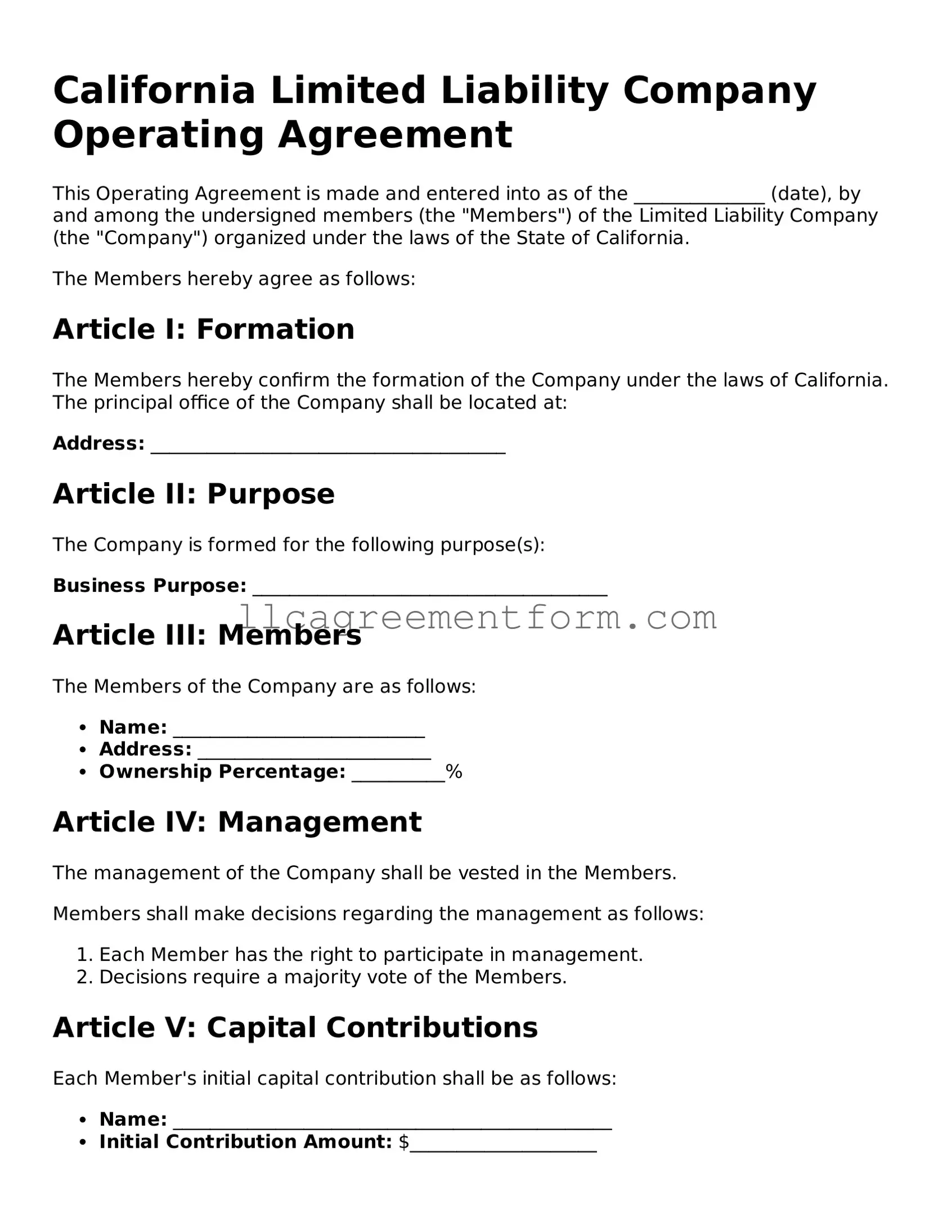Free Operating Agreement Document for California
The California Operating Agreement form is a vital document that outlines the management structure and operational procedures of a limited liability company (LLC) in California. This agreement helps define the roles of members, their rights, and responsibilities, ensuring smooth business operations. To create your own Operating Agreement, click the button below.
Get Operating Agreement Now
